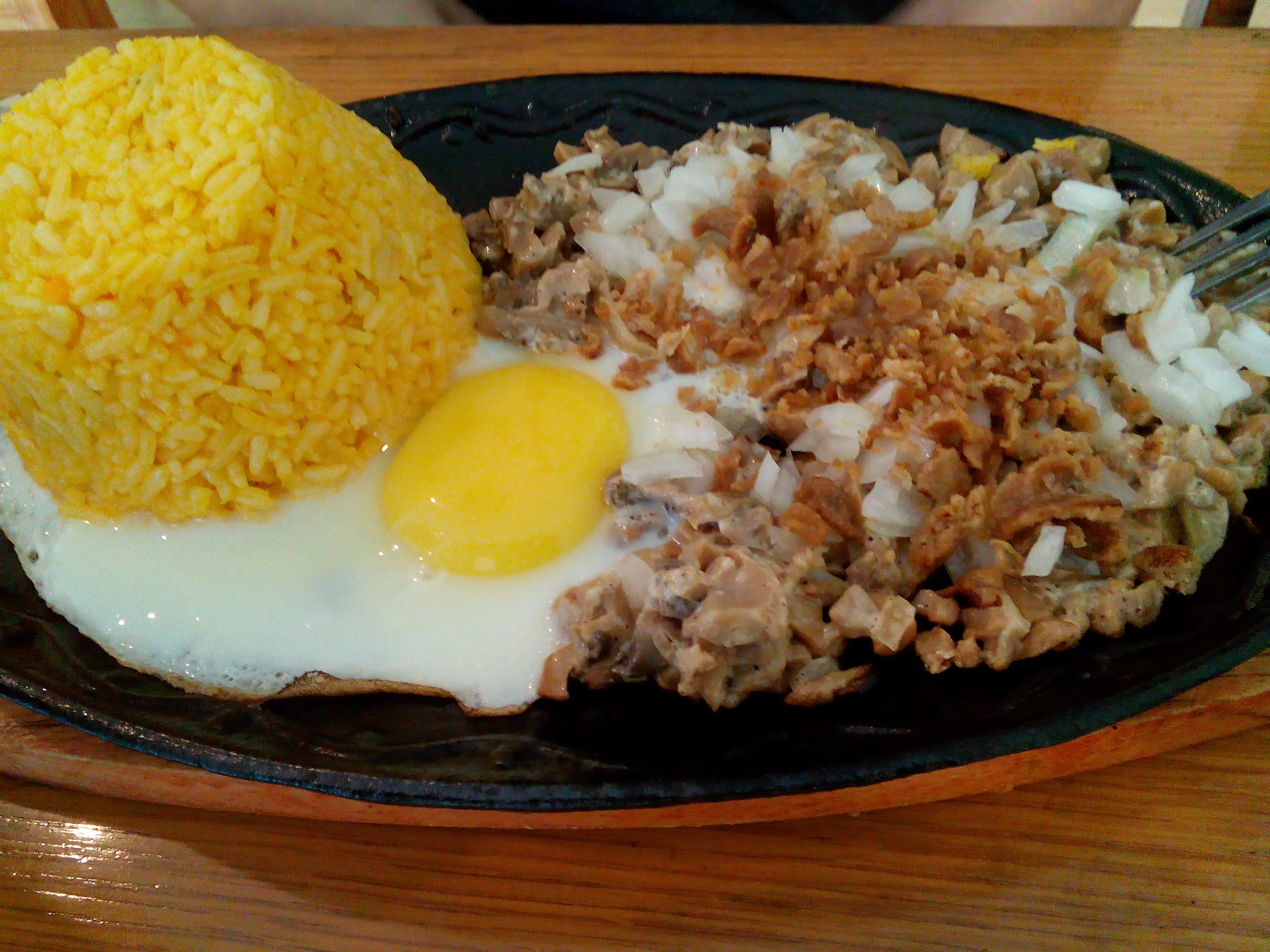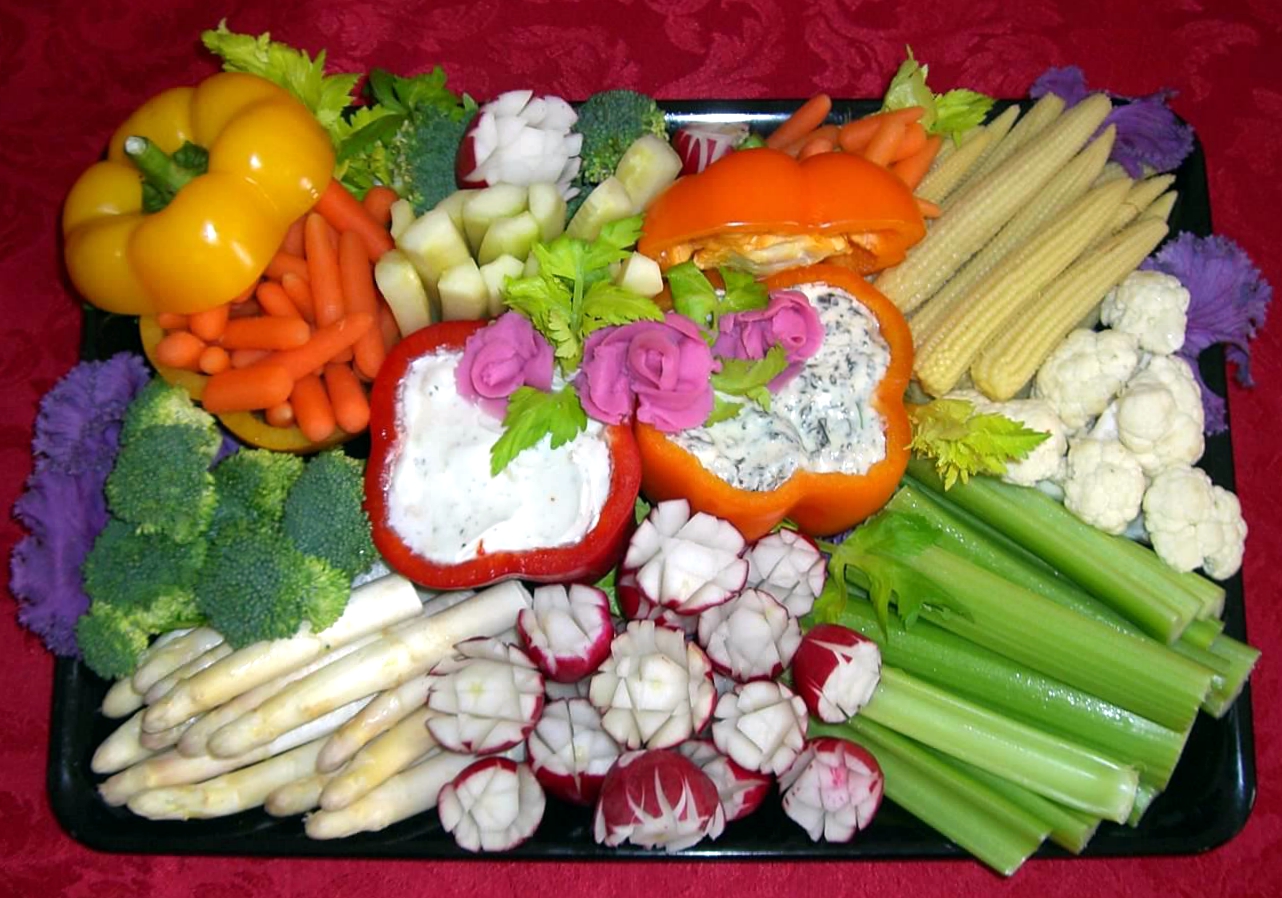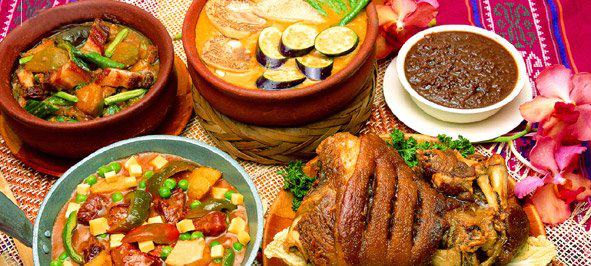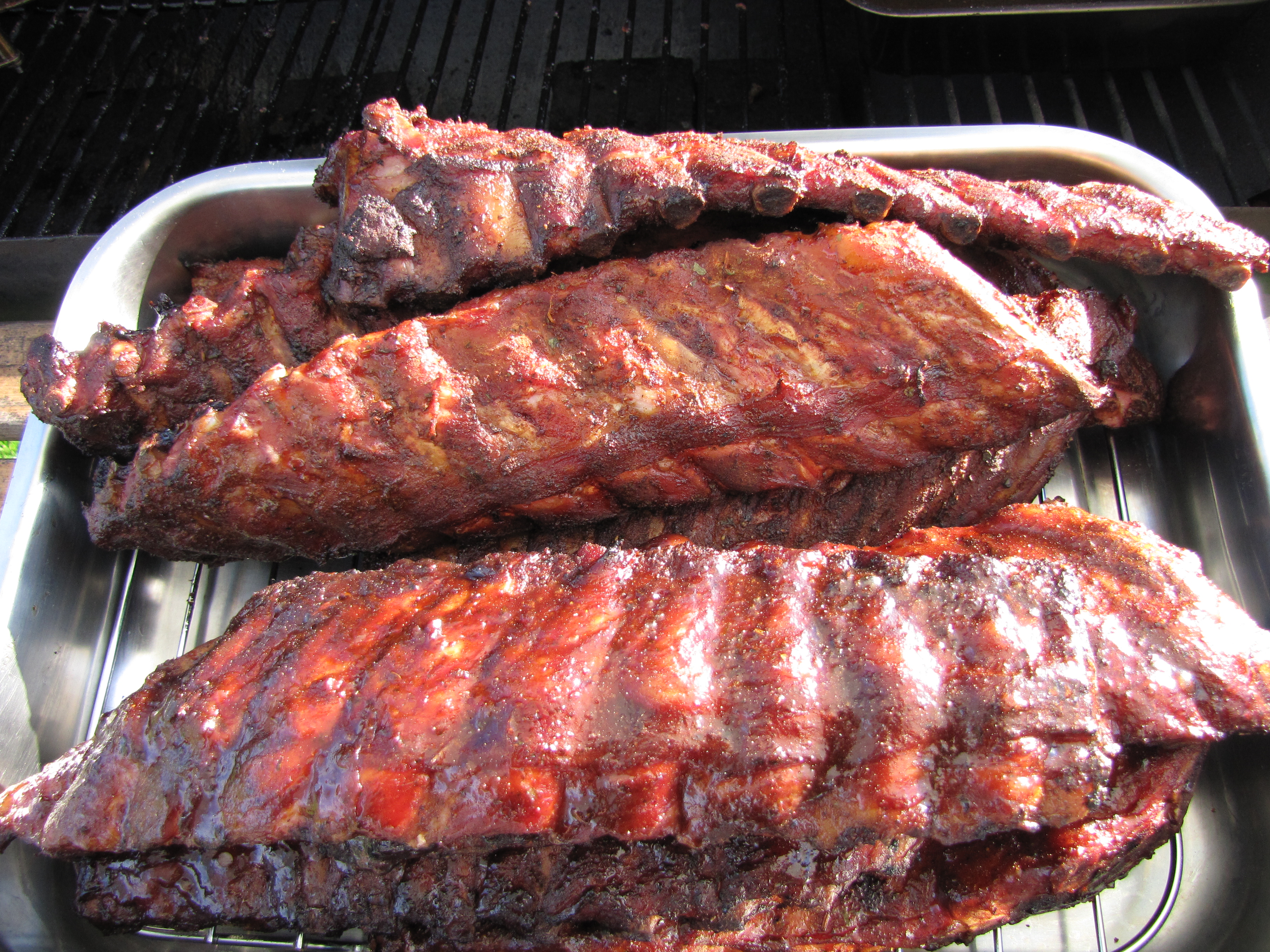|
Tokwa't Baboy
''Tokwa't baboy'' ( Tagalog for "tofu and pork") is a typical Philippine appetizer. It consists of pork ears, pork belly and deep-fried tofu, and is served in a mixture of soy sauce, pork broth, vinegar, chopped white onions, scallions and red chili peppers. It is usually served as ''pulutan'' ("snack", lit. tran: "finger food"), as a meal served with rice or as a side dish to rice porridge. ''Tokwa'' is the Lan-nang word for firm beancurd, while ''baboy'' is the Tagalog word for pork; t'' is the contracted form of ''at'', which means "and". The original dish (without the tofu) is known as ''kulao'' or ''kilawin na tainga ng baboy'' among the Caviteño Tagalogs. It is a type of ''kinilaw''. For this reason, ''tokwa't baboy'' is sometimes referred to as ''kilawing tokwa't baboy''. See also * List of hors d'oeuvre * List of pork dishes * List of tofu dishes *Philippine Cuisine Filipino cuisine is composed of the cuisines of more than a hundred distinct Ethnic groups i ... [...More Info...] [...Related Items...] OR: [Wikipedia] [Google] [Baidu] |
Philippines
The Philippines, officially the Republic of the Philippines, is an Archipelagic state, archipelagic country in Southeast Asia. Located in the western Pacific Ocean, it consists of List of islands of the Philippines, 7,641 islands, with a total area of roughly 300,000 square kilometers, which are broadly categorized in Island groups of the Philippines, three main geographical divisions from north to south: Luzon, Visayas, and Mindanao. With a population of over 110 million, it is the world's List of countries and dependencies by population, twelfth-most-populous country. The Philippines is bounded by the South China Sea to the west, the Philippine Sea to the east, and the Celebes Sea to the south. It shares maritime borders with Taiwan to the north, Japan to the northeast, Palau to the east and southeast, Indonesia to the south, Malaysia to the southwest, Vietnam to the west, and China to the northwest. It has Ethnic groups in the Philippines, diverse ethnicities and Culture o ... [...More Info...] [...Related Items...] OR: [Wikipedia] [Google] [Baidu] |
Sisig
''Sisig'' ( ) is a Filipino dish made from pork jowl and ears (''maskara''), pork belly, and chicken liver, which is usually seasoned with calamansi, onions, and chili peppers. It originates from the Pampanga region in Luzon. ''Sisig'' is a staple of Kapampangan cuisine. The city government of Angeles, Pampanga, through City Ordinance No. 405, series of 2017, declared sizzling ''sisig babi'' ("pork ''sisig''") as a tangible heritage of Angeles City.Angeles Ordinance No. 405, Series of 2017 “An ordinance declaring Sizzling Sisig Babi as an intangible cultural heritage of Angeles, and establishing systems and policies in safeguarding the original recipe of Sizzling Sisig, providing mechanisms of implementation, and for other related purposes”) Origin The earliest known record of the word ''sisig'' can be traced back to 1732, and was recorded by Augustinian friar Diego Bergaño in his ''Vocabulary of the Kapampangan Language in Spanish and Dictionary of the Spanish Lan ... [...More Info...] [...Related Items...] OR: [Wikipedia] [Google] [Baidu] |
Tofu Dishes
or bean curd is a food prepared by Coagulation (milk), coagulating soy milk and then pressing the resulting curds into solid white blocks of varying softness: ''silken'', ''soft'', ''firm'', and ''extra (or super) firm''. It originated in China and has been consumed in the country for over 2,000 years. Tofu is a traditional component of many East Asian cuisine, East Asian and Southeast Asian cuisine, Southeast Asian cuisines; in modern Western cooking, it is often used as a Meat alternative, meat substitute. Nutritionally, tofu is low in calories, while containing a relatively large amount of protein. It is a high and reliable source of iron, and can have a high calcium or magnesium content depending on the Flocculation, coagulants (e.g. calcium chloride, calcium sulphate, magnesium sulphate) used in manufacturing. Cultivation of tofu, as a protein-rich food source, has one of the lowest needs for land use (1.3 m²/ 1000 kcal) and emits some of the lowest amount of greenhouse ... [...More Info...] [...Related Items...] OR: [Wikipedia] [Google] [Baidu] |
Appetizers
An hors d'oeuvre ( ; ), appetiser, appetizer or starter is a small dish served before a meal in European cuisine. Some hors d'oeuvres are served cold, others hot. Hors d'oeuvres may be served at the dinner table as a part of the meal, or they may be served before seating, such as at a reception or cocktail party. Formerly, hors d'oeuvres were also served between courses.''Oxford English Dictionary'', First Edition, 189''s.v.'' Typically smaller than a main dish, an hors d'oeuvre is often designed to be eaten by hand. Hors d'oeuvre are typically served at parties as a small "snack" before a main course. Etymology in French literally means 'outside the work', that is "not part of the ordinary set of courses in a meal". In practice, it is a dish which stands on its own as a snack or supports the main course. The French spelling is the same for singular and plural usage. In English, the typographic ligature is usually replaced by the digraph and two plural forms are acce ... [...More Info...] [...Related Items...] OR: [Wikipedia] [Google] [Baidu] |
Philippine Cuisine
Filipino cuisine is composed of the cuisines of more than a hundred distinct Ethnic groups in the Philippines, ethnolinguistic groups found throughout the Philippines, Philippine archipelago. A majority of mainstream Filipino dishes that comprise Filipino cuisine are from the food traditions of various ethnolinguistic groups and tribes of the archipelago, including the Ilocano people, Ilocano, Pangasinan people, Pangasinan, Kapampangan people, Kapampangan, Tagalog people, Tagalog, Bicolano people, Bicolano, Visayan, Chavacano, and Maranao people, Maranao ethnolinguistic groups. The dishes associated with these groups evolved over the centuries from a largely indigenous (largely Austronesian peoples, Austronesian) base shared with maritime Southeast Asia with varied influences from Chinese cuisine, Chinese, Spanish cuisine, Spanish, and American cuisine, American cuisines, in line with the major waves of influence that had enriched the cultures of the archipelago, and adapted us ... [...More Info...] [...Related Items...] OR: [Wikipedia] [Google] [Baidu] |
List Of Tofu Dishes
This is a list of tofu dishes. Tofu, also called bean curd, is a food made by coagulating soy milk and then pressing the resulting curds into soft white blocks. It is a component in many East Asian and Southeast Asian cuisines. Tofu dishes * * * * * * * * ''Dubu gui'' – grilled tofu rectangles * ''Dubu jjigae'' – Korean tofu stew p. 97. * * * * * * * * * * * * * * ''Tahu aci'' * * * * ''Tahu gimbal'' * * ''Tahu petis'' * * * [...More Info...] [...Related Items...] OR: [Wikipedia] [Google] [Baidu] |
List Of Pork Dishes
This is a list of notable pork dishes. Pork is the culinary name for meat from the domestic pig ('' Sus domesticus''). It is one of the most commonly consumed meats worldwide,Raloff, JanetFood for Thought: Global Food Trends Science News Online. May 31, 2003. with evidence of pig husbandry dating back to 5000 BC. Pork is eaten both freshly cooked and preserved. The consumption of pork is prohibited in Judaism, Islam, and some Christian denominations such as Seventh-day Adventism. In the United States, the U.S. Department of Agriculture recommends cooking ground pork, that is obtained from pig carcasses, to an internal temperature of 160 °F, followed by a 3-minute rest, and cooking whole cuts to a minimum internal temperature of 145 °F, also followed by a 3-minute rest. Pork dishes A * * * * B * * (can also be made with beef or lamb) * * * * * * * C * * * * * * * * * * * * * * * * * * * * * * * File:Carne de porco � ... [...More Info...] [...Related Items...] OR: [Wikipedia] [Google] [Baidu] |
List Of Hors D'oeuvre
This is a list of notable hors d'oeuvre, also referred to as appetizers or starters, which may be served either hot or cold. They are food items served before the main courses of a meal, and are also sometimes served at the dinner table as a part of a meal. Many cultures serve dips, such as baba ghanoush, '' chili con queso'', hummus, and tzatziki with bread or vegetables as hors d'oeuvre. If the period between when guests arrive and when the meal is eaten (for example during a cocktail hour) is extended these might also serve the purpose of sustaining guests during the wait, in the same way that apéritifs are served as a drink before meals. Hors d'oeuvre are sometimes served with no meal afterward; this is the case with many reception and cocktail party events. Hors d'oeuvre See also * Amuse-bouche * Banchan Korean side dishes * Cicchetti * Dim sum * Finger food * Garnish * Gujeolpan * List of dips * List of pastries pastry, Pastries are small buns made usi ... [...More Info...] [...Related Items...] OR: [Wikipedia] [Google] [Baidu] |
Tagalog People
The Tagalog people are an Austronesian Ethnic groups in the Philippines, ethnic group native to the Philippines, particularly the Metro Manila and Calabarzon regions and Marinduque province of southern Luzon, and comprise the majority in the provinces of Bulacan, Bataan, Nueva Ecija, Aurora (province), Aurora, and Zambales in Central Luzon and the island of Mindoro. Etymology The most popular etymology for the endonym "Tagalog" is the term ''tagá-ilog'', which means "people from [along] the river" (the prefix ''tagá-'' meaning "coming from" or "native of"). However, the Filipino historian Trinidad Pardo de Tavera in ''Etimología de los Nombres de Razas de Filipinas'' (1901) concludes that this origin is linguistically unlikely, because the ''i-'' in ''ilog'' should have been retained if it were the case. De Tavera and other authors instead propose an origin from ''tagá-álog'', which means "people from the lowlands", from the archaic meaning of the noun ''álog'', meanin ... [...More Info...] [...Related Items...] OR: [Wikipedia] [Google] [Baidu] |
Lan-nang
Philippine Hokkien is a dialect of the Hokkien language of the Southern Min branch of Min Chinese descended directly from Old Chinese of the Sinitic family, primarily spoken vernacularly by Chinese Filipinos in the Philippines, where it serves as the local Chinese ''lingua franca'' within the overseas Chinese community in the Philippines and acts as the heritage language of a majority of Chinese Filipinos. Despite currently acting mostly as an oral language, Hokkien as spoken in the Philippines did indeed historically have a written language and is actually one of the earliest sources for written Hokkien using both Chinese characters (traditionally via Classical Chinese () worded from and read in Hokkien) as early as around 1587 or 1593 through the '' Doctrina Christiana en letra y lengua china'' and using the Latin script as early as the 1590s in the Boxer Codex and was actually the earliest to systematically romanize the Hokkien language throughout the 1600s in the Hokkien-S ... [...More Info...] [...Related Items...] OR: [Wikipedia] [Google] [Baidu] |
Congee
Congee ( , derived from Tamil language, Tamil ), is a form of savoury rice porridge made by boiling rice in a large amount of water until the rice softens. Depending on rice–water ratio, the thickness of congee varies from a Western oatmeal porridge to a gruel. Since the history of rice cultivation in Asia stretches back to the Baiyue-inhabited lower Yangtze circa 10,000 BC, congee is unlikely to have appeared before that date. Congee is typically served with side dishes, or it can be topped with meat, fish, and Chinese pickles, pickled vegetables. Vivid experiences of eating or delivering thin congee as wartime or famine food often feature in diaries and chronicles. In some cultures, congee is eaten primarily as a breakfast food or late supper; some may also eat it as a substitute for rice at other meals. It is often considered suitable for the sick as a mild, easily digestible food. Etymology The popular English name ''congee'' derives from the Tamil language, Tamil wor ... [...More Info...] [...Related Items...] OR: [Wikipedia] [Google] [Baidu] |
Philippine Cuisine
Filipino cuisine is composed of the cuisines of more than a hundred distinct Ethnic groups in the Philippines, ethnolinguistic groups found throughout the Philippines, Philippine archipelago. A majority of mainstream Filipino dishes that comprise Filipino cuisine are from the food traditions of various ethnolinguistic groups and tribes of the archipelago, including the Ilocano people, Ilocano, Pangasinan people, Pangasinan, Kapampangan people, Kapampangan, Tagalog people, Tagalog, Bicolano people, Bicolano, Visayan, Chavacano, and Maranao people, Maranao ethnolinguistic groups. The dishes associated with these groups evolved over the centuries from a largely indigenous (largely Austronesian peoples, Austronesian) base shared with maritime Southeast Asia with varied influences from Chinese cuisine, Chinese, Spanish cuisine, Spanish, and American cuisine, American cuisines, in line with the major waves of influence that had enriched the cultures of the archipelago, and adapted us ... [...More Info...] [...Related Items...] OR: [Wikipedia] [Google] [Baidu] |








